What I learned at an Indigenous partnership conference
Also, new surveys challenge some myths about young adults. And a trip by bicycle to Sidney-by-the-Sea, British Columbia.
Indigenous business activity highlights opportunities for Canada’s development and for reconciliation
Last week, I accepted an invitation from Resource Works, a non-profit public advocacy and research organization, to attend a conference about Indigenous partnerships in Vancouver.
Held on the traditional lands of the Musqueam, Squamish and Tsleil-Waututh peoples, the annual Indigenous Partnerships Success Showcase highlights ways that progressive relationships between Indigenous enterprises and Canadian companies are enabling development projects and promoting reconciliation. The conference is organized by Resource Works. Its managing director, Margareta Dovgal, is the event lead.
The conference featured notable guests, from high-ranking government officials, to the chiefs of various Indigenous Nations and the CEOs of Canadian companies.
As the name of the event implies, it was a forum for celebrating successes, sharing ideas and finding common ground for future development. I found it refreshing, eye-opening and informative. It's clear that working with Indigenous people represents a huge opportunity for improving the quality of life Canada for millions of people, both Indigenous and non-Indigenous.
I'd like share a few bullet points from my notebook:
Cultural and business factors
Indigenous communities are very diverse and each is on its own path of development.
Indigenous groups need and want, above all, partnerships based on trust.
There are many opportunities for all citizens to engage with Indigenous people. Business partnerships naturally follow.
Indigenous groups say they generally have good legal support. What many groups need now is financial sector development, which includes investment advice and other financial services to capitalize and manage ambitious community-building projects.
Indigenous groups are the first to say that the key for the development of their communities can be summarized in three words: "governance, governance, governance." (Good self-management is everything.)
The lack of housing on native lands is one of the biggest obstacles to future growth. It is also an opportunity. When Indigenous people want to exercise their skills in their communities after having lived elsewhere for education and jobs, they often cannot find a place to stay. The poor quality of existing housing is also an issue in many areas.
The stark differences between urban and rural life present many challenges. Leaving aside the need for services and linguistic-cultural links, Indigenous people point out they have been largely invisible in the design of Canadian cities. New projects are changing this.
Government relations and important next steps
The Indian Act, the Canadian federal government's primary law related to Indigenous matters, first introduced in 1876, is seen as one of the greatest obstacles to reconciliation by Indigenous People. The Act is a vestige of the colonial era. “It must go,” says respected Indigenous leader Miles Richardson, who is a former President of the Council of Haida Nation.
Richardson, who has decades of experience representing Indigenous groups in business and government circles, summarized the Indian Act as an interference in the nation-to-nation relationship. He said the Act attempts to homogenize Indigenous people and its regulations are skewed to "manage us as a problem."
Decision-making for Indigenous groups is based on the principle of consent. The underlying authority for providing and acknowledging consent emerges from two key ingredients: first, a recognition of a band or nation’s collective story, which gives the group an identity and the right to govern itself. Secondly, a sense of place, which is tied to the land and waters of a particular people.
The rights of Indigenous groups are held by the collective rather than by individuals.
The recognition by the government of British Columbia of the 2007 UN Declaration on the Rights of Indigenous Peoples (UNDRIP), through its own 2019 Declaration on Rights of Indigenous Peoples Act (DRIPA), is a precedent-setting, large-scale commitment that is being studied by other governments across the country. British Columbia was the first province in Canada to pass such legislation. (The federal government passed a bill to align Canadian law with UNDRIP in 2021.)
Indigenous people and the government of BC hold a kind of roadmap with this Act, but various ministries and Indigenous groups still need to work their way through the uncharted issue-by-issue discussions of making this legislation a substantive reality.
BC's Minister of Indigenous Relations and Reconciliation, Murray Rankin, explained the three key ramifications and tasks related to DRIPA:
1. Revising all laws in British Columbia to reflect the goals of the new Act. (This will take years to achieve.)
2. Working through a detailed five-year action plan. This includes 89 specific actions already identified. It also includes a yearly accountability check.
3. The government made a commitment to making decisions together with Indigenous groups and pledged to respect the basic principle of consent.
This is a huge undertaking for all parties and impressive in its scope. I don’t think many people in British Columbia are really aware of how ambitious this initiative is and how it will change the province over time. Depending on how things evolve, it may ultimately refine and reshape Canada’s identity.
It’s an exciting time for a province and a country in transition.
—
More info: Over one thousand people attended the two-day event. One session was held entirely in the Squamish language of the Coast Salish People, a first for a business conference.
The event web site is here.
New data shows Millennials and Gen Zs are concerned about financial security, taking on second jobs, voting more
Millennial: currently aged between 25 and 43, born early 1980s to about 2000.
Gen Z: currently aged between 13 and 25, born late 1990s to early 2010s.
Since I wrote last week about contrasting perspectives being shared about young people in the job market, new surveys reveal other issues that characterize these demographic groups. The notion, for example, that Millennials and Gen Zs turn down jobs and prefer to wait for the perfect opportunity may be an exaggeration.
According to a new study by Deloitte, financial concerns are pushing Millennials and Gen Zs to seek not only a primary job, but also a second one to make ends meet. Deloitte interviewed more than 22,000 young people in 44 countries in March and found that anxiety about the high cost of living is a big concern for many of them.
46 % of Gen Zs said they took on a side job to supplement their main employment, while 37% of Millennials did so.
The Deloitte report also said this:
Half of Gen Zs and Millennials say they live pay check to pay check. They worry that a potential economic recession has led employers to backtrack on climate action. They also worry that it will hamper their ability to ask for much needed pay increases, continue pushing for flexibility, or find new jobs.
Voting is up
Interestingly, these concerns about quality of life, economics, the climate and governance have also increased the engagement of young people in politics.
They are showing up in numbers to vote in elections, especially in the United States. A separate survey, by Catalist, an American research company, demonstrates that voter turnout among young voters has surged in recent U.S. elections.

While voter participation among older Americans has declined, Millennials and Gen Z voters are more engaged and closing the gap. For example, between 2014 and 2022, the votes cast by people born between 1990 and 1994 increased by 144%. For those born between 1985 and 1989, the increase was 121% over the same period.
What is driving this change? David Leonhardt, who writes The Morning newsletter for The New York Times, offered an explanation:
Many younger voters have become more politically active because they fear for the country’s future. Those on the left — who are a majority of younger voters — worry about climate change, abortion access, the extremism of the Republican Party and more. Those on the right worry about secularization, political correctness, illegal immigration and more.
Generally speaking, younger voters tend to align with the Democratic party. In 2022, for example, 65% of voters between the ages of 18 and 29 voted for the Democrats.
Still, the Catalist survey also shows that some working-class younger voters are moving their support to the Republican Party, especially those who don't like the social liberalism of the Democratic Party. This drift appears to be happening in states like Texas and Florida, which have remained Republican over recent elections.
Overall, I think this increased political engagement by younger people is good news for democracy. The American election in 2024 will be very interesting to watch. The data from these surveys helps us understand key concerns of these demographic groups.
—
Source material:
Riding to the Island
I'm still reflecting on a recent visit to Vancouver Island by bicycle. It was a regional experience for us, but worth trying wherever one lives. I found it liberating to be travelling in a new way, to be free of the car culture for a while, and to get some exercise while moving outdoors from one place to another.
I am grateful also for the efforts that municipalities have made to encourage cycling and reduce the dependence on cars. This trip would not have been as easy if bus companies had not outfitted bike ranks on the front of buses or set up convenient connections between city rail, bus and ferry terminals.
I'd like to celebrate these advances, even as we continue our collective journey of moving towards cleaner, better mass transportation and reducing congestion on our roads.
Let me recap our little adventure of a couple of weeks ago.
My spouse had an appointment to meet someone in Sidney-by-the-Sea on Vancouver Island. The distance between our home in the city of Vancouver and Sidney is about 110 kilometres, of which 53 are over water. Being a progressive thinker, she had the idea of trying an experiment: to make the trip by bicycle and avoid the high ferry fees for vehicles. (For two adults travelling in a car, the one-way fare is $104.80 in Canadian dollars.)
It seemed like a great idea. The weather forecast was good, so we set out.
The first stage of the trip was from our Kerrisdale-area apartment in the city of Vancouver to Bridgeport station, a transportation hub on the Fraser River. This section took approximately 30 minutes along the Arbutus Greenway, a paved railway line that connects Vancouver’s seawall in the north to the Fraser River in the south.
At Bridgeport station, buses connect to the municipal elevated train system (the Canada Line). There's also a nice casino resort there, but this was not a day for detours.
At the transit stop the woman driving the double-decker bus kindly showed us how to load our bikes on the racks on the front of the bus. We then settled in for the 45-minute trip to the Tsawwassen Ferry Terminal. Price of the bus ride: $2.50 per person with a pre-paid card.
One advantage of travelling on foot or by bicycle is the relief of not worrying over vehicle space on the ferry, which at peak times can mean a delay of several hours as drivers await space on the next available ferry. Pedestrians and cyclists generally are exempt from capacity issues. When the ferry arrives, passengers on foot and bicycles are loaded first. Bikes have their own stands in the lower compartments of the vessels in the truck area. The other advantage of being a pedestrian or cyclist is the cost of the ticket. The price of the one-way ticket was only $19.20 per person.
That day we met several people on traditional and electric bikes who were riding to Victoria. One couple was making the trip from Maple Ridge on the mainland to a downtown hotel as a way of celebrating a birthday. Their e-bikes offered excellent range, and removed all worries about climbing hills and physical limitations.
When we disembarked at the ferry terminal, we rode our bikes the short six kilometres to Sidney along the Lochside Trail. Cycle paths are clearly marked and seem well-maintained. We arrived in town with lots of time to spare.
After my wife's appointment, we became tourists for a while, walking around the streets before riding back to the ferry terminal and a relaxed return crossing to the mainland.
If you have the time and the weather looks okay, I recommend trying this kind of experiment wherever you live. It feels good to use public transportation, figure out new logistics and get some exercise while travelling. You also meet interesting people along the way, something you would likely not do riding in the cocoon that is the interior of your car or SUV.
<>
Sketch corner
This young lady was leaning against a transit pole in downtown Vancouver, listening to music, as she waited for the bus.
Thanks for reading Zanepost. Have a good week!
-Renato







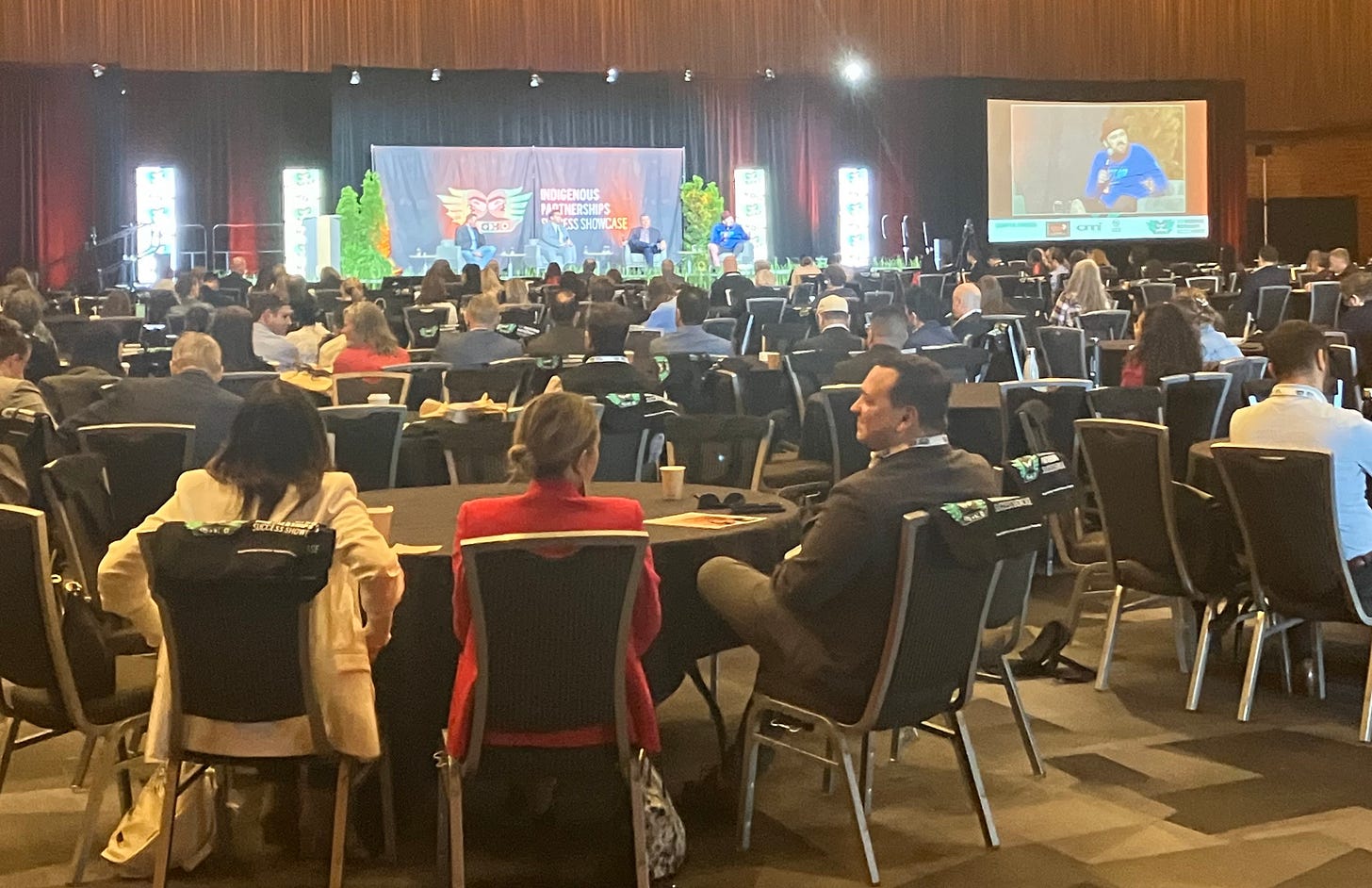

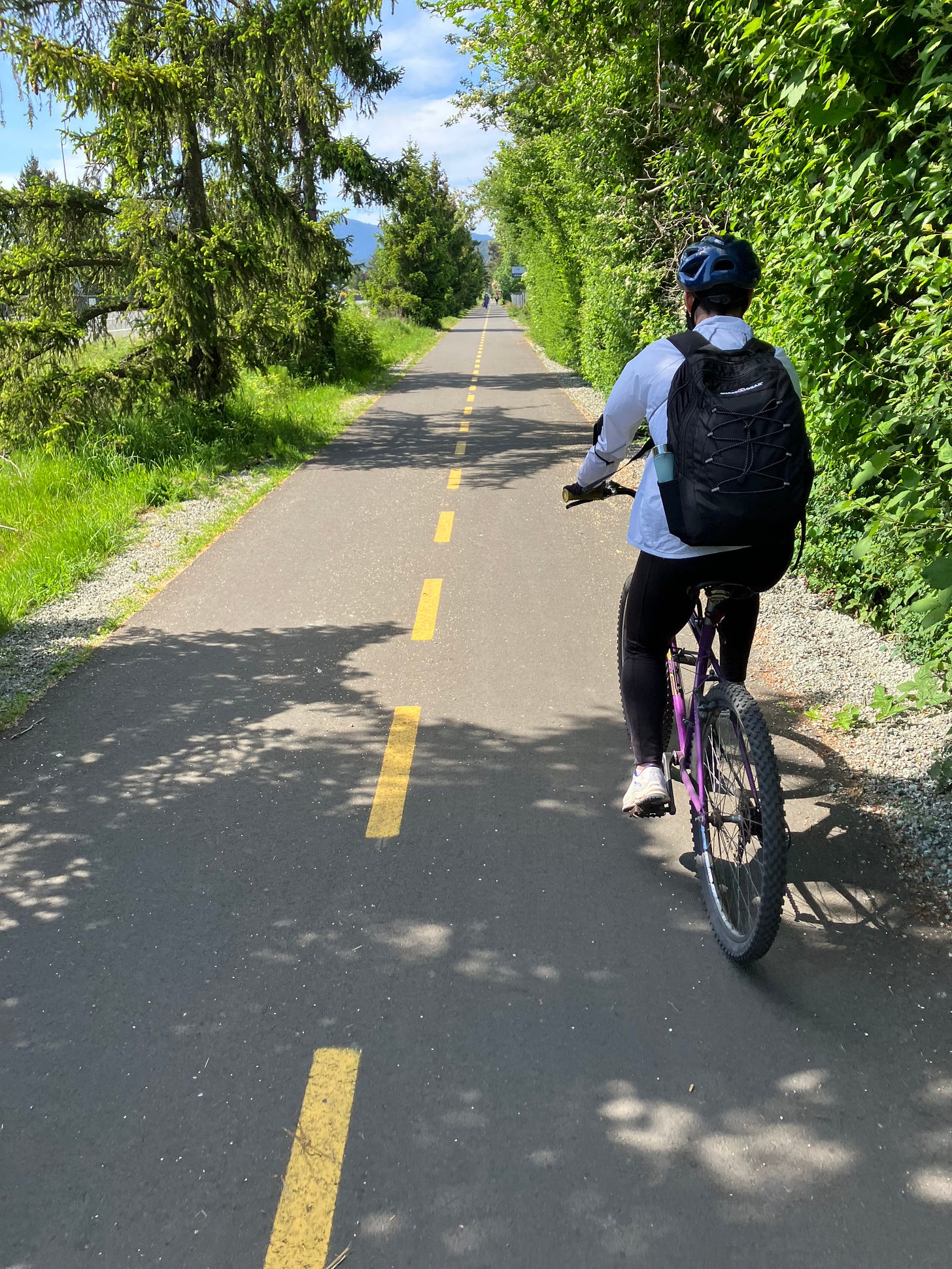
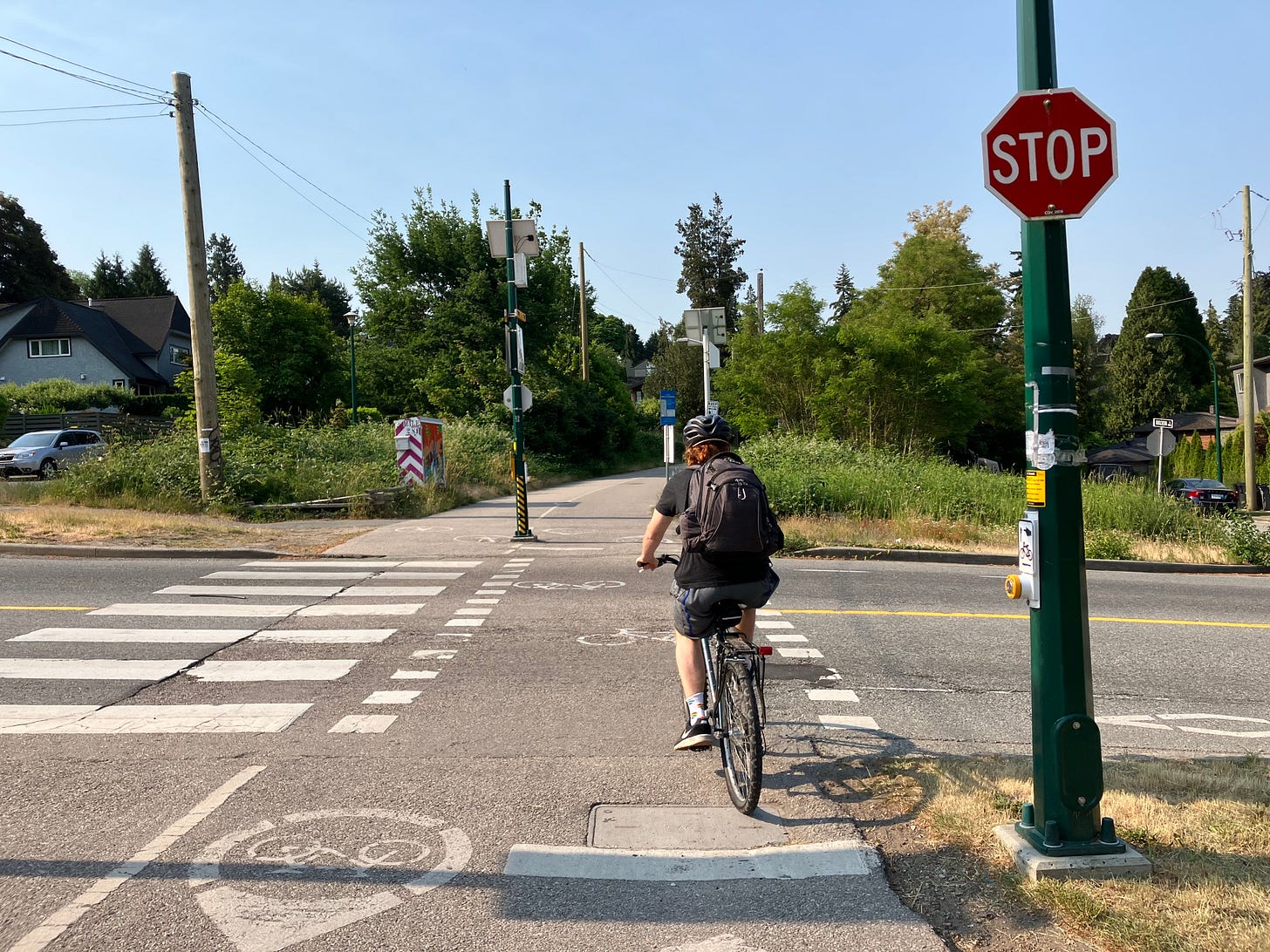
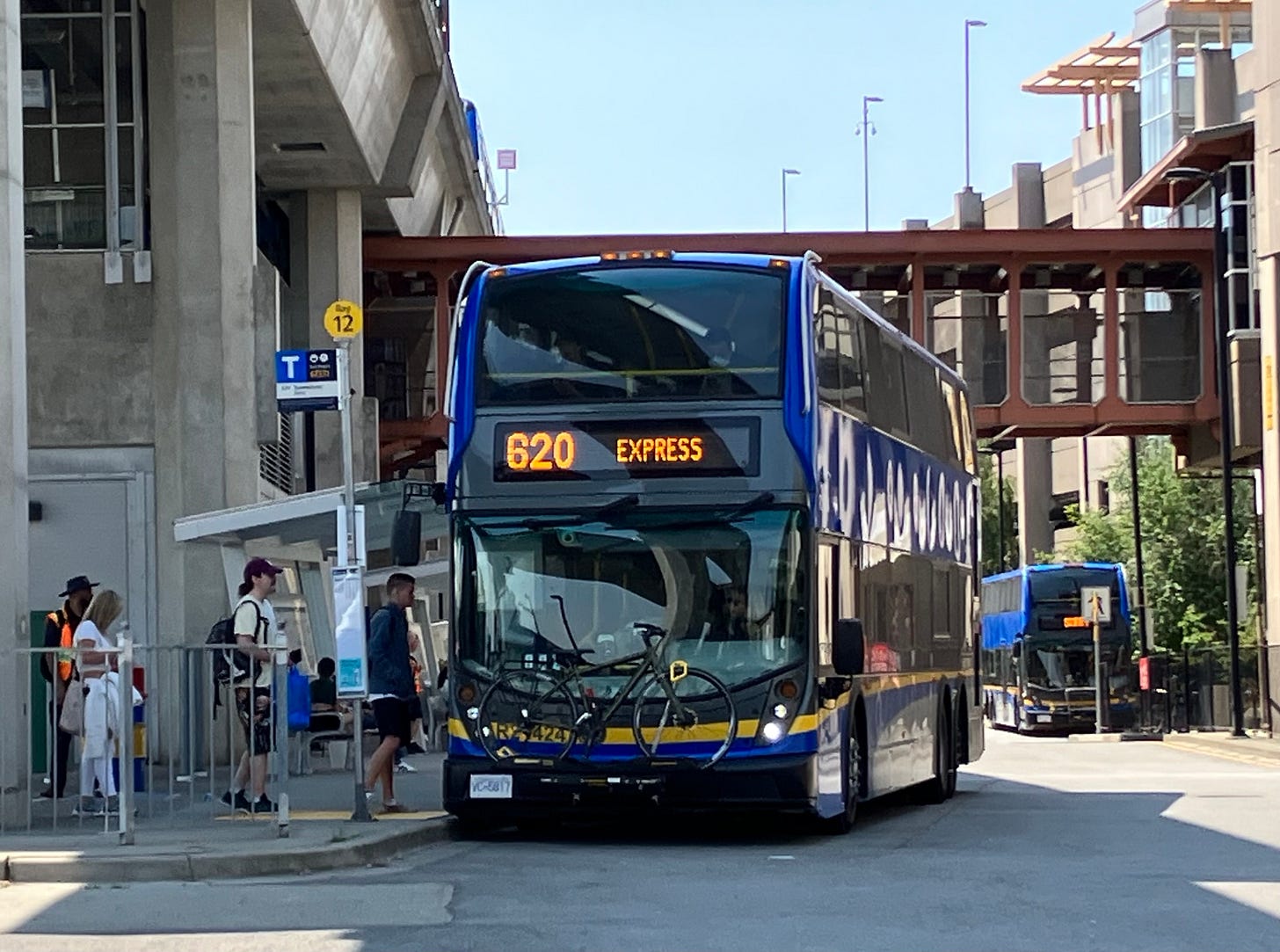

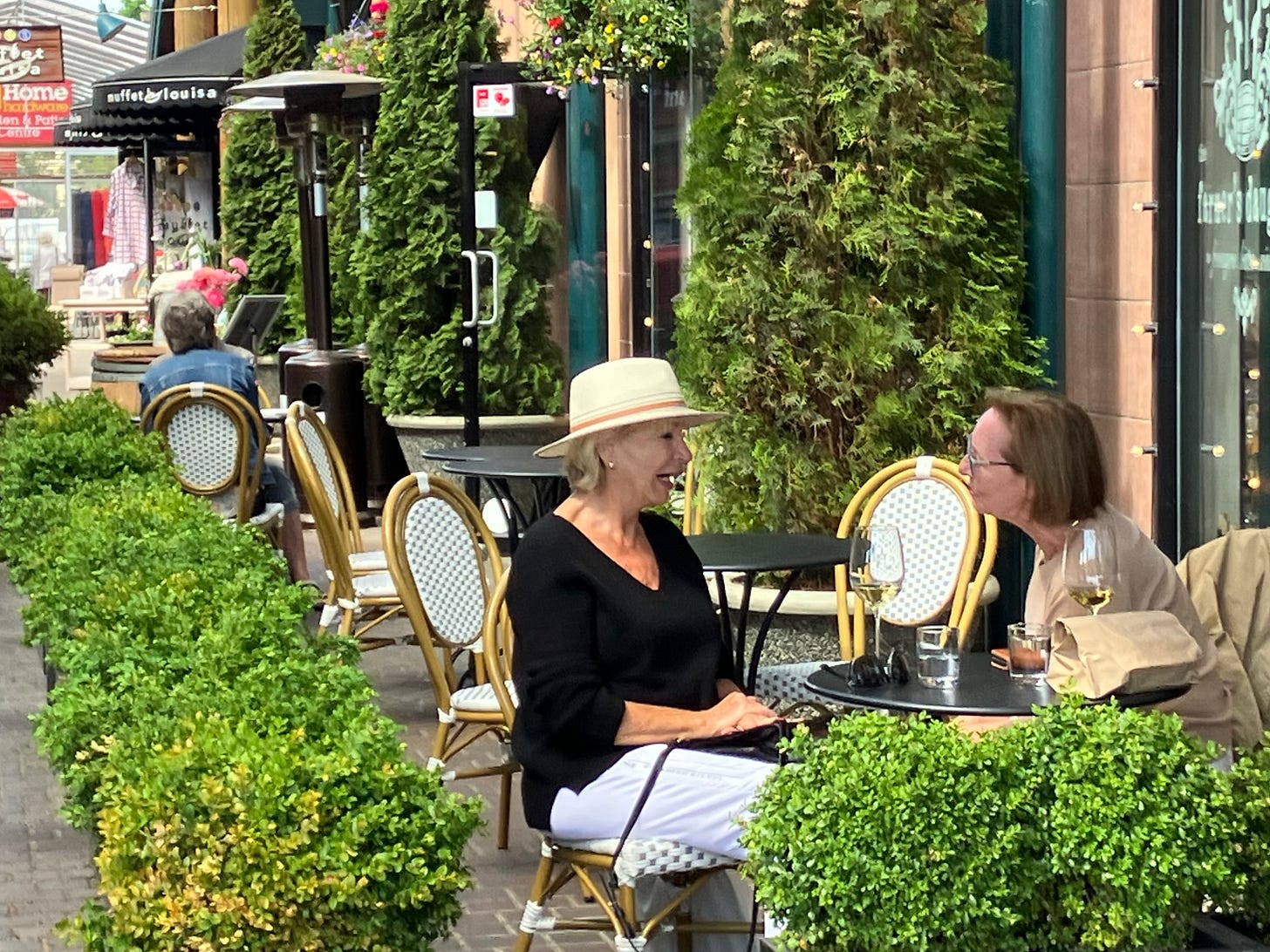
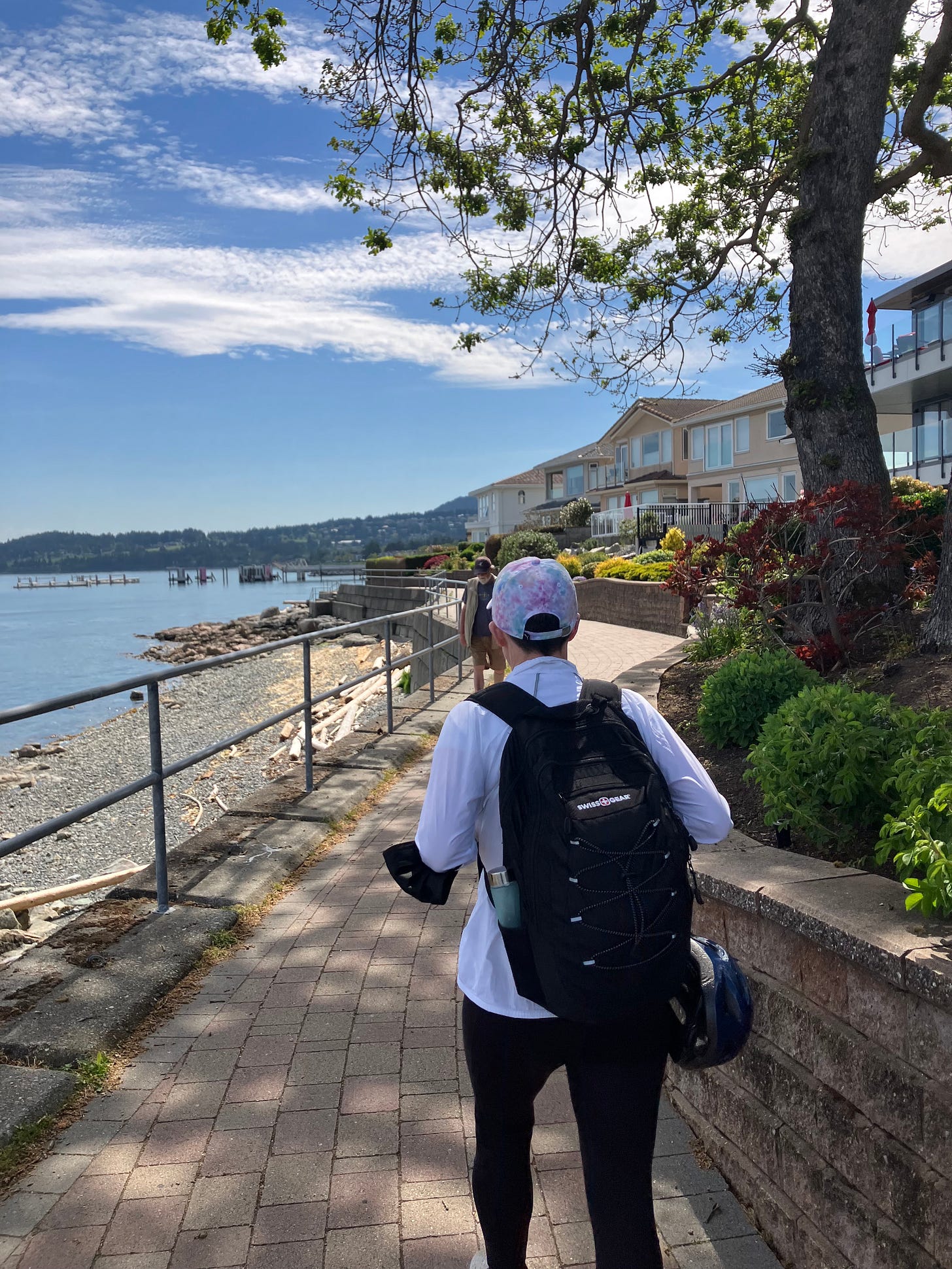
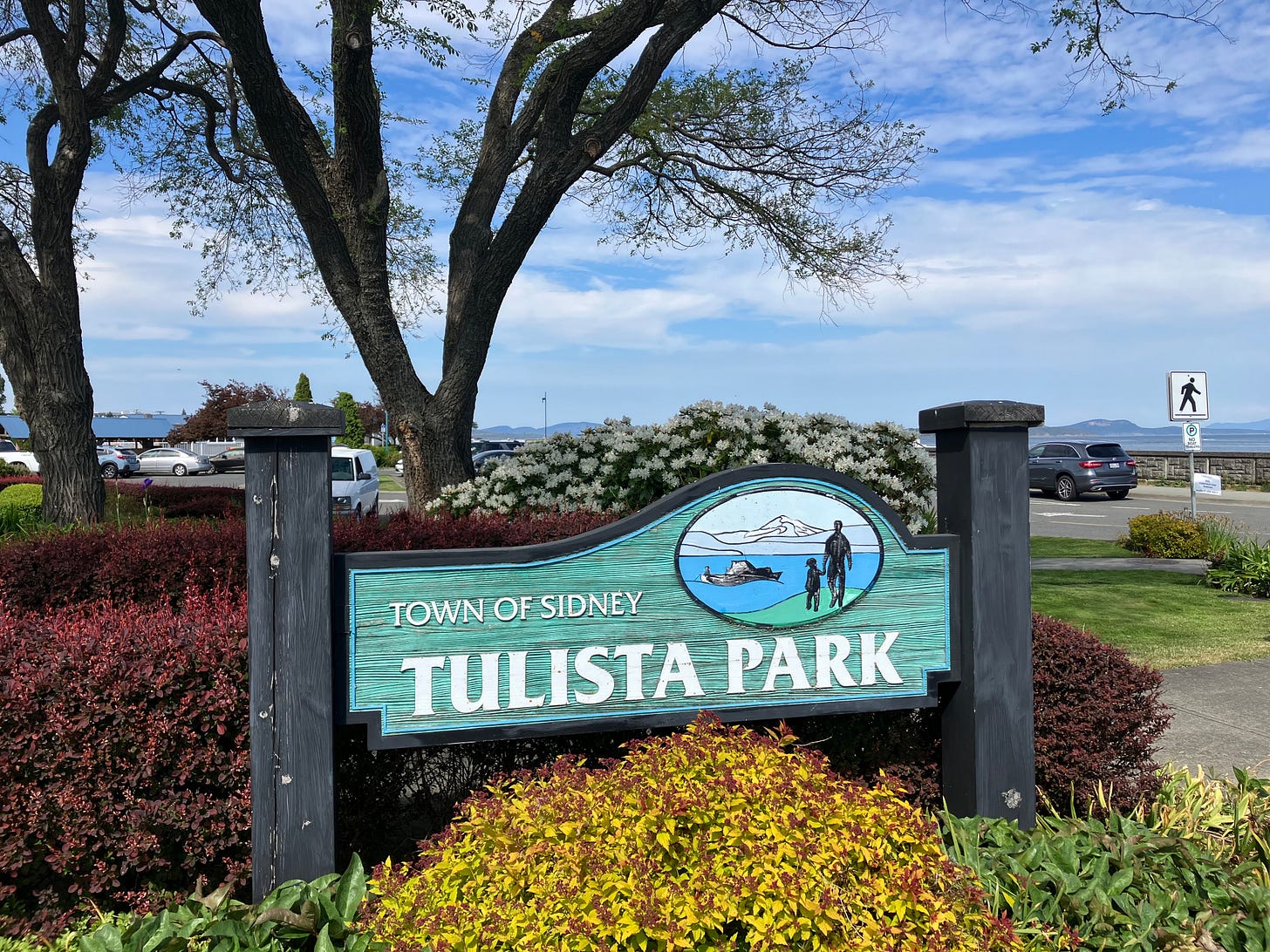
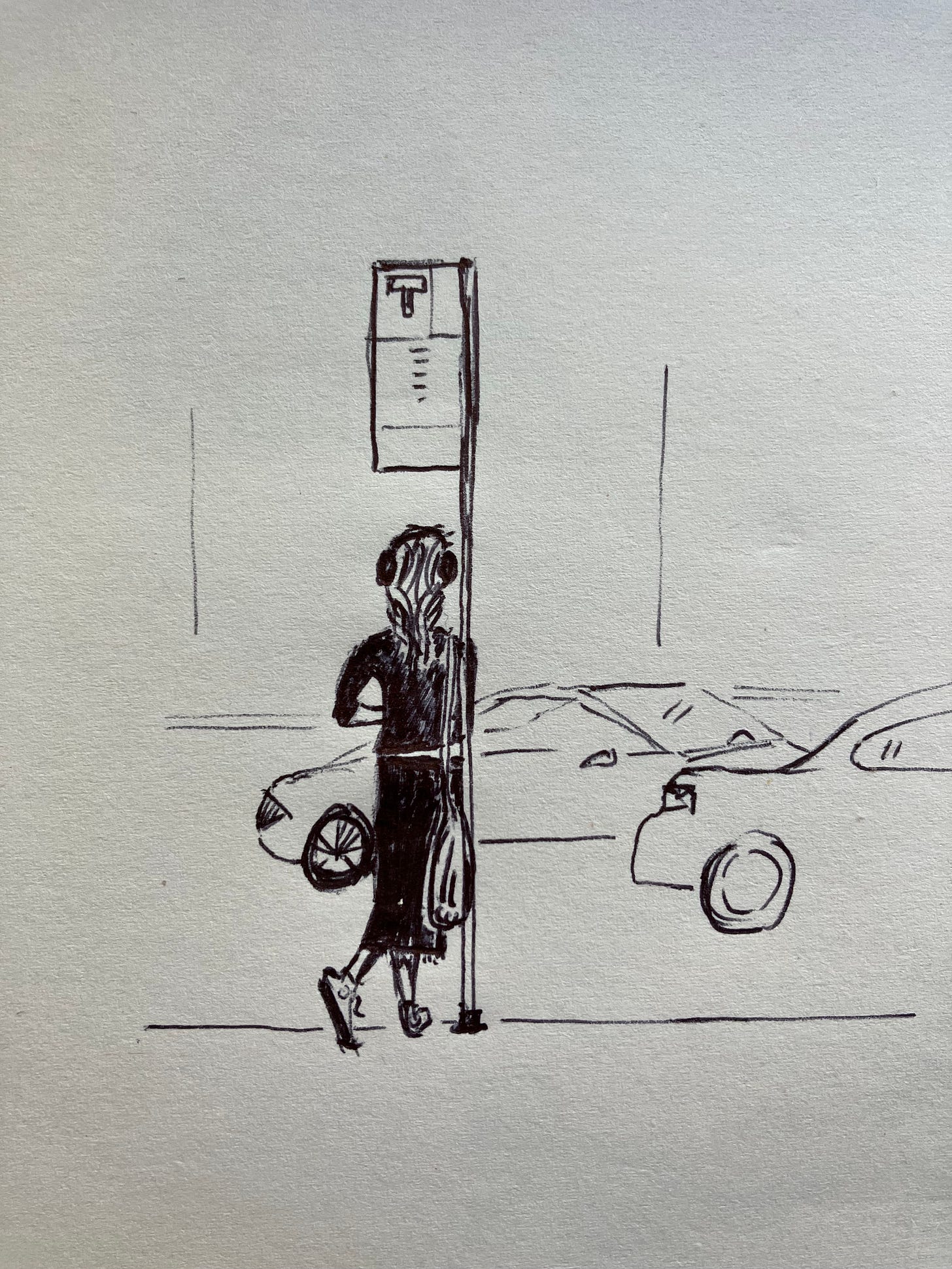
Renato-
As a cyclist I an only add 1 comment-please invest in a very good bicycle lock. Worth the $$$$$. And riding your bike to your destination-glorious and freeing. Just beware of being downwind of the manure spraying tractors. you will ride through a fog of pretty smelly stuff. And I have also been the recipient of manure catapults. These are equally dreadful.